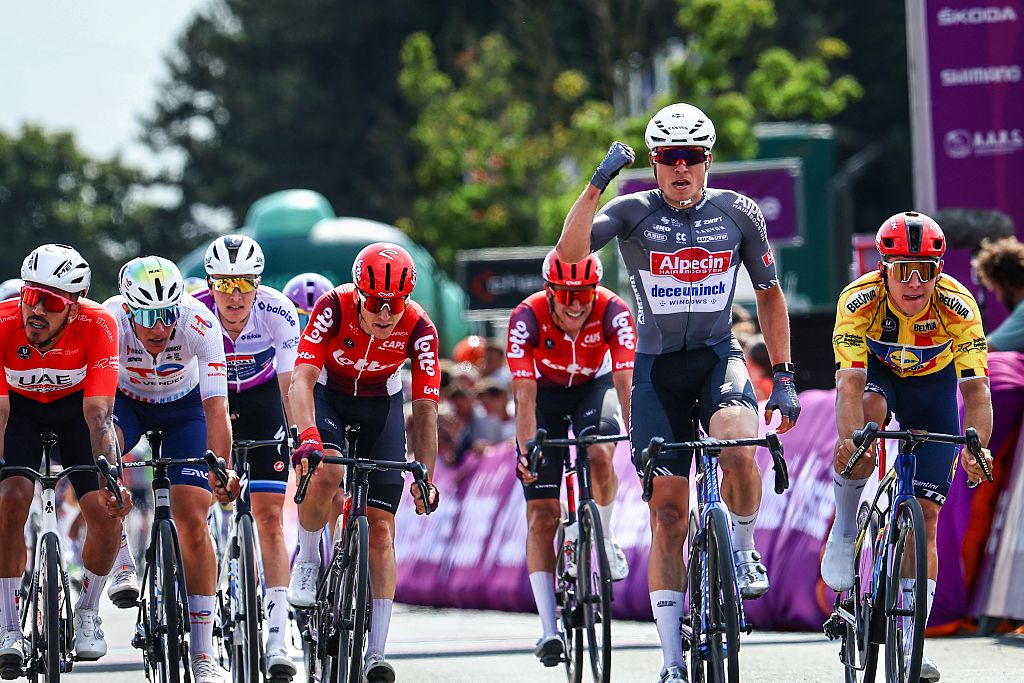A softer (crash) landing? Redesigned air-cushion barriers in use at Baloise Belgium Tour
New design also has practical advantages, reportedly much less cumbersome and allowing organisers to move key element of safer finishes quickly and efficiently

The Baloise Belgium Tour organisers have introduced a new system of enlarged air cushions as barriers for finishes which could prove much more practical for races to transport from one stage to another, as well as safer for the riders.
The new-style air cushions were first used on stage 2, Wielerflits reports, a stage won by Jasper Philipsen (Alpecin-Deceuninck) in a bunch sprint.
Known as the Safe Cycling Finish Barrier (SCFB) and made by a Norwegian company, Baloise race organiser Christophe Impens explained to the Dutch website that the newly designed extended air cushions were a significant development.
"We were looking for an application that is not only safe, but also logistically very easy to process," Impens explained.
As Impens pointed out, one key advantage of the SCFB is while each unit of the new barriers is ten metres long, one metre high and 20 centimetres thick when operational, they are considerably smaller – less than a cubic metre – when deflated.
As with all such air cushions already in use at races, the key element of offering a softer landing for riders when they crash remains unchanged. But as Impens sees it, the compact nature of the barriers makes them a game-changer.
“In total, it is about 250 metres of safety equipment, all of which fits in the trunk of a car;" Impens told Wielerflits.
The latest race content, interviews, features, reviews and expert buying guides, direct to your inbox!
"All you need to secure an entire finish line in a bike race is a station wagon or small van and two people.”
The new material only arrived in Belgium this week, Impens said, and was first used on stage 1 in the last few kilometres, before being given a full test on stage 2 at the finish at Putte.
Race organisers Golazo say that they believe that in the future, the SCFB's ultra-handy format means it could end up being used for other points in the race, like dangerous bends, crossroads and descents. As Impens put it, "All you need is a generator."
Alasdair Fotheringham has been reporting on cycling since 1991. He has covered every Tour de France since 1992 bar one, as well as numerous other bike races of all shapes and sizes, ranging from the Olympic Games in 2008 to the now sadly defunct Subida a Urkiola hill climb in Spain. As well as working for Cyclingnews, he has also written for The Independent, The Guardian, ProCycling, The Express and Reuters.
You must confirm your public display name before commenting
Please logout and then login again, you will then be prompted to enter your display name.
